Roots of Style: Prairie Architecture Ushers In Modern Design
Does your house hug and hold the landscape and blend into the horizon? It could be Prairie architecture or a derivation.
Consider the era. At the turn of the 20th century, America embraced the Industrial Revolution while its population exploded as a result of immigration, improved health and innovation. Abundant resources and space provided opportunity for expansion, physically and psychologically. Out of those seeds arose the Prairie style. Confident horizontal elements combined with sturdy materials, while the Arts and Crafts movement inspired an overlay of delicate, hand-hewn details.
Three conditions define the importance of Prairie-style houses. First, it is an American original developed as a contemporary solution to a blossoming culture and nation. Second, it could be considered the first modern residential architecture predating the West Coast–born Craftsman style and the birth of European modernism. Third, its original era briefly lasted until around World War I, but its influence continued throughout the 20th century.
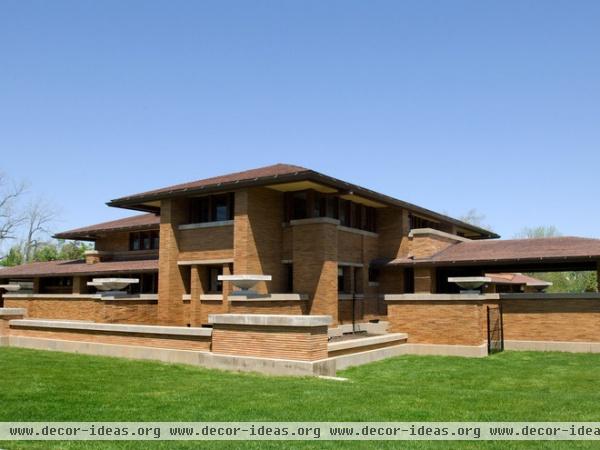
Prairie traces to the late 1800s, when a group of Chicago-based architects began developing an aesthetic that dismissed classicism and medieval precedents as the framework for defining their residential designs. Among others, Louis Sullivan contributed to its development, but Frank Lloyd Wright became the most famous of this progressive group of architects and produced many landmark examples.
Located in Buffalo, New York, the Martin house stands as just one example of Wright's prolific career, establishing the style. His highly styled Prairie designs are easily identifiable by the broad overhanging hipped roofs, contrasting concrete caps on linear brick walls, and one- or two-story massing arranged in a free-form asymmetrical manner. His Chicago Robie House remains the most prominent landmark and closely resembles this design.
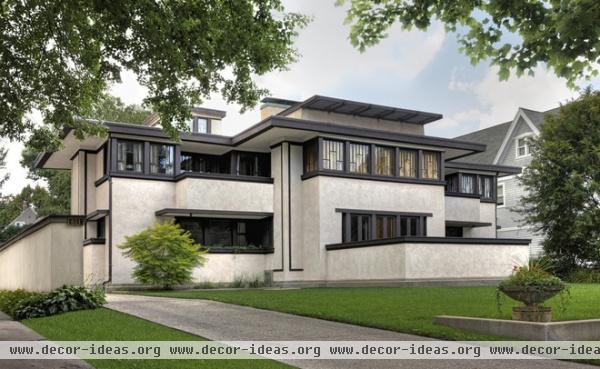
Topped with a rare flat roof, the Wright designed Balch house in Chicago, shown here, illustrates progressive trends for its time. The horizontal emphasis sharply contrasted other fashions previously popular. Notice how the window groups turn the corners, providing further linear exaggeration, and predate the glass wall found in future modern architecture. Windows articulate a geometric pattern, and balconies appear to float above the first-level porches.
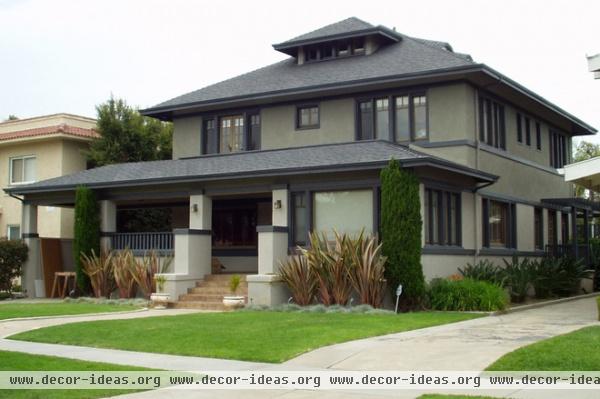
Also known as an American Foursquare, this Prairie sub-type developed as a vernacular response to Prairie style and can be found throughout the U.S. A large square plan of two levels, with a large porch and often a basement, characterizes this style. As in this Long Beach, California, house, the porch extends into a carport along one side. Hipped dormers commonly provide flexible attic space. Notice how the wood belt line, square porch columns and contrasting color scheme provide horizontal emphasis.
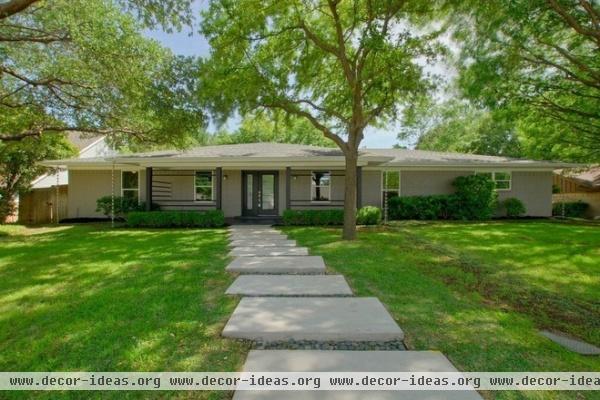
Prairie's influence shows up in this suburban Dallas-area ranch-style house. Though ranch originally developed in California, Prairie's broad eave and hipped roof suited this type of midcentury vernacular development across the country. Brick veneer became increasingly popular, especially in the Midwest, and successfully alluded to original Prairie architecture.
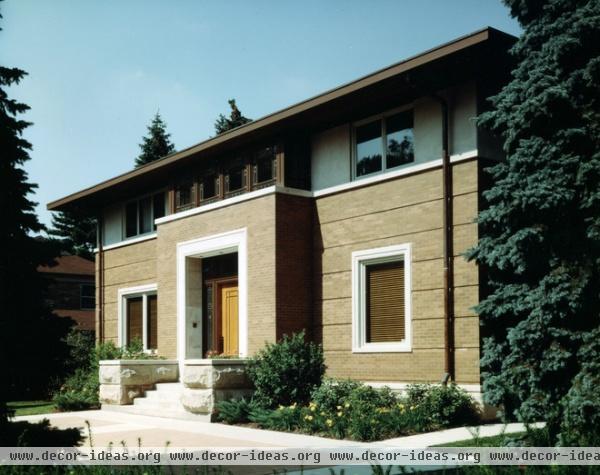
Though we easily associate Prairie with single-level designs, originals normally consisted of at least two levels. Take note of the confident elevation of this new Chicago-area house. It closely resembles Wright's first Prairie design, the 1893 Winslow house. Imagine strolling through a neighborhood during Victorian times and coming upon this rectangular composition emphasized with horizontal detail. Notice also the leaded and stained glass window sashes of the upper level center bank of windows. Arts and Crafts inspired these and other wooden details, which can be found in originals and faithful contemporary interpretations.
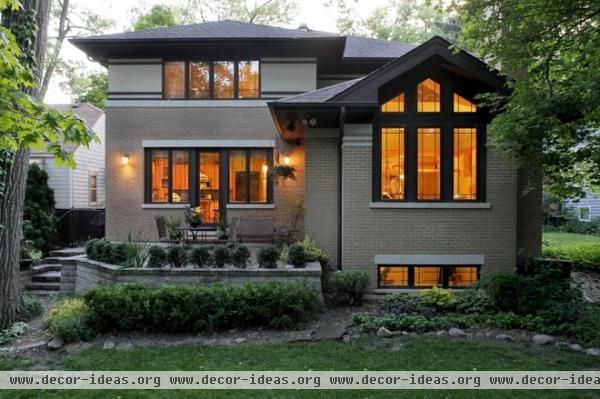
Though hip roofs define most Prairie designs, gable roofs appear in some, as in this newer interpretation. Consider the foreshadowing of the glazed gable end of this house. This is an important trait that shows up in midcentury modern houses.
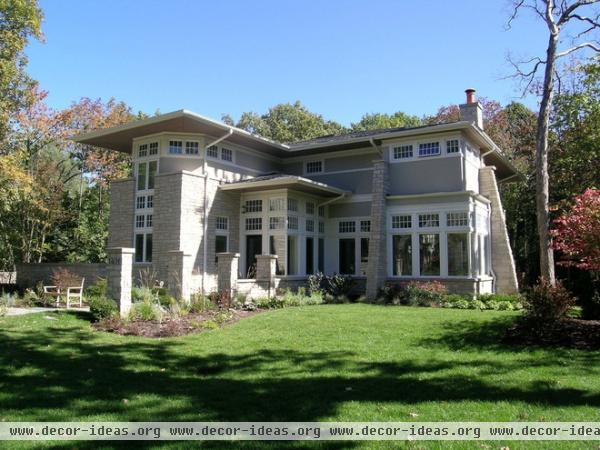
In this contemporary interpretation of the style, the architects have given the hip roof a floating appearance and used stone, instead of brick, combined with stucco. Vertical elements contrast with horizontal rows of windows. Return to the photo of the Martin house at the beginning of this ideabook to see similarities in how the vertical lines support the overall composition.
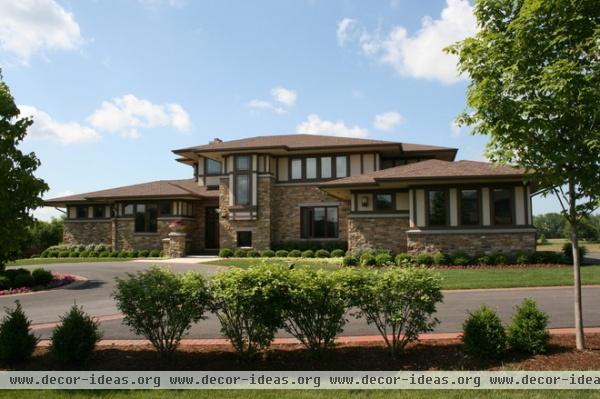
The Prairie style here translates into a familiar suburban massing. Vertical windows emphasize the stairwell of the house, and the stone veneer with a precast cap underscores the banks of windows.
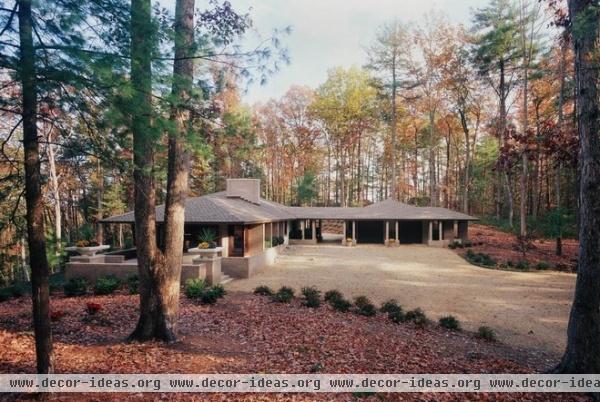
Notice the massive masonry chimney on this new Richmond, Virginia, design. Prairie chimneys often anchor the exteriors with their size and position. Characteristic of later versions of the style, this house sprawls and hugs the landscape. Large floor-to-ceiling windows and glass doors establish the modern indoor-outdoor relationship.
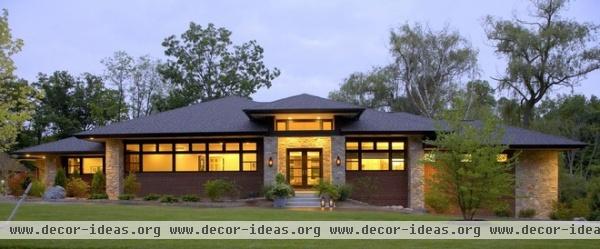
In this newer Detroit house, the elevation stretches across its site but also descends to the right and rear to reveal a multi-level plan. Again, notice the contrast of the vertical stone veneered wall terminations with the long horizontal eave line and rows of windows. This visual support provides the design with a sense of permanence.

Less the extensive and beautifully detailed masonry here, this low-slung and rectangular design resembles a common style found across the U.S. While ranch style developed in the 1930s in California from the convergence of Spanish colonial and Craftsman architecture, among others, the Prairie aesthetic contributed to the proliferation of ranch architecture in the form of the broad hip roof like what we see in this example.
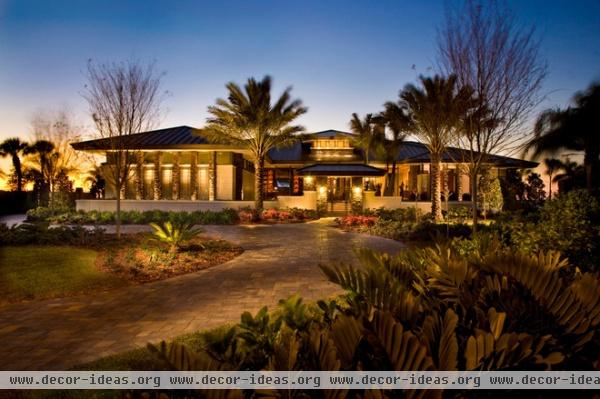
This Florida house adapts the Prairie theme to a warm climate and coastal setting. Sophisticated lighting highlights its textures and vertical elements. Note the use of the standing seam metal roof, which has recently gained popularity for its durability and contemporary aesthetic. Also interesting to this house is the Asian-inspired pagoda-type entrance gate.
As in most styles, the original eras lasted a few decades before being replaced in popularity by another new style or revival. The late 20th century produced revivals or interpretations of just about every preceding fashion found across the U.S. Some are executed with great precision and others with less understanding and often with influences of other styles.
These newer houses can often be considered eclectic or even neo-eclectic. The examples here are referred to in the original designation, though the newer versions are more precisely revivals or "neo" interpretations.
Substantial time passes before the emergence of a specific stylistic designation. The group known as the Prairie school were not named as such until their work became studied by architectural historians. Fascinating is the taste for interpretation that converges with an architect's creativity.
Roots of Style: Trace the history of your home's design












